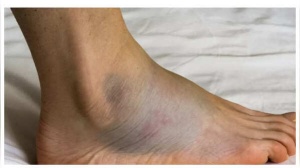Vitamin D, often called the "sunshine vitamin," is produced in the skin when exposed to sunlight. It's crucial for maintaining bone health and a robust immune system. This essential nutrient supports overall development and plays a vital role in the healthy function of the nervous system, muscles, and immune response.
Despite its significance, Vitamin D deficiency is a widespread nutritional concern globally, emphasizing the importance of awareness and, when needed, supplementation. It's particularly prevalent among individuals over 65 and those with darker skin tones.
Vitamin D deficiency occurs when the body doesn't have enough Vitamin D. This primarily affects the bones and muscles. According to the Cleveland Clinic, this deficiency is a global health issue, affecting approximately 1 billion people worldwide, with 50% of the population experiencing some level of insufficiency. In the United States, about 35% of adults are deficient.
Vitamin D can be obtained through three primary sources:
Certain groups face a higher risk of Vitamin D deficiency:
Vitamin D is vital for maintaining calcium balance in the blood and bones, contributing to building and maintaining strong bones. It enables the body to effectively utilize calcium and phosphorus, supporting bone health and healthy tissues.
A severe Vitamin D deficiency can hinder calcium and phosphorus absorption, leading to hypocalcemia (low blood calcium levels). This can trigger secondary hyperparathyroidism, where the parathyroid glands become overactive to normalize blood calcium levels.
Untreated hypocalcemia and hyperparathyroidism can cause symptoms like muscle weakness, cramps, fatigue, and depression. The body may also withdraw calcium from the bones to compensate for the deficiency, accelerating bone demineralization. This can result in osteomalacia (softening of the bones) in adults and rickets in children, both increasing the risk of fractures. In children, rickets can cause bowed or bent bones due to the demineralization of growing bones.
According to Cleveland Clinic, symptoms of Vitamin D deficiency include:
In children:
In adults:
However, many individuals may experience no noticeable signs or symptoms.
Vitamin D deficiency can stem from two primary factors:
Specific causes include:
Furthermore, biological and environmental factors, such as older age and higher melanin levels in the skin, can elevate the risk of deficiency.
Ensuring adequate Vitamin D intake through a balanced diet and/or sun exposure is crucial, while also being mindful of skin cancer risks. Balancing sun exposure with sunscreen use is recommended. Daily Vitamin D needs vary by age.
Few foods naturally contain Vitamin D:
Foods often fortified with Vitamin D include:
Multivitamins and Vitamin D supplements are also available. Consult with a healthcare provider before starting any new supplements.
Possible complications of Vitamin D deficiency include:
If left untreated, rickets can lead to:
Fortunately, these conditions are treatable, and early intervention can prevent long-term consequences.
The goal of treating and preventing Vitamin D deficiency is to achieve and maintain adequate Vitamin D levels. This can be achieved through:
Newer articles
Older articles
 5 Overlooked Warning Signs of Colon Cancer: Early Detection Saves Lives
5 Overlooked Warning Signs of Colon Cancer: Early Detection Saves Lives
 Shukla's ISS Arrival Heralds New Era for Indian Space Exploration; Gaganyaan Mission Looms
Shukla's ISS Arrival Heralds New Era for Indian Space Exploration; Gaganyaan Mission Looms
 Vijay Sethupathi Apologizes Amid Controversy Over Son Surya's Film 'Phoenix'; Thalapathy Vijay's Support Revealed
Vijay Sethupathi Apologizes Amid Controversy Over Son Surya's Film 'Phoenix'; Thalapathy Vijay's Support Revealed
 Android Security Alert: Government Warns of Critical Flaws Exposing User Data
Android Security Alert: Government Warns of Critical Flaws Exposing User Data
 Ashada Gupt Navratri 2025: Dates, Significance, and How to Observe This Hidden Festival
Ashada Gupt Navratri 2025: Dates, Significance, and How to Observe This Hidden Festival
 Skin Deep: 7 Warning Signs on Your Skin That Could Signal Heart Trouble
Skin Deep: 7 Warning Signs on Your Skin That Could Signal Heart Trouble
 Smith Eyes Grenada Test Return After Injury Layoff
Smith Eyes Grenada Test Return After Injury Layoff
 Staying Hydrated May Significantly Lower Risk of Heart Failure, New Study Suggests
Staying Hydrated May Significantly Lower Risk of Heart Failure, New Study Suggests
 Moto G54 Price Slashed in India: Check Out the New, Lowered Costs
Moto G54 Price Slashed in India: Check Out the New, Lowered Costs
 Gambhir Sidelines Pant's Twin Tons After India's Test Loss, Emphasizes Team Performance
Gambhir Sidelines Pant's Twin Tons After India's Test Loss, Emphasizes Team Performance